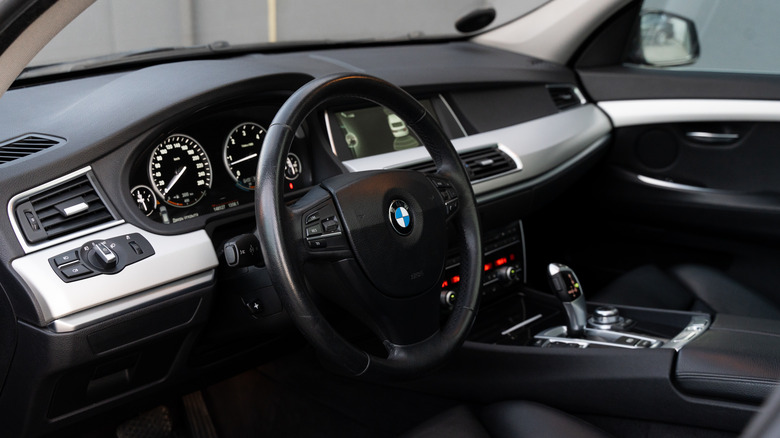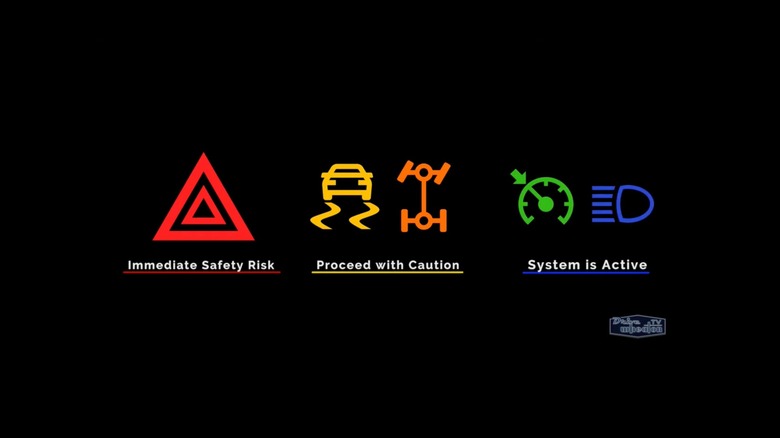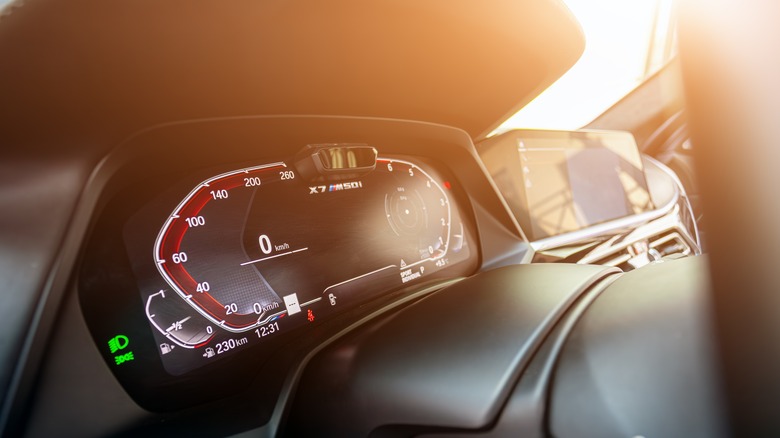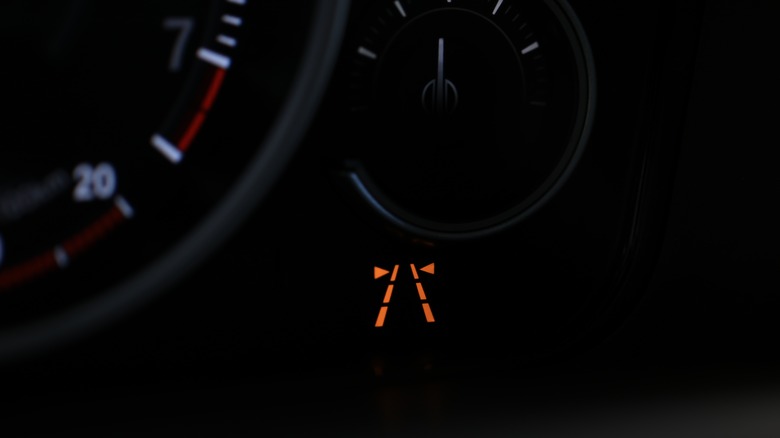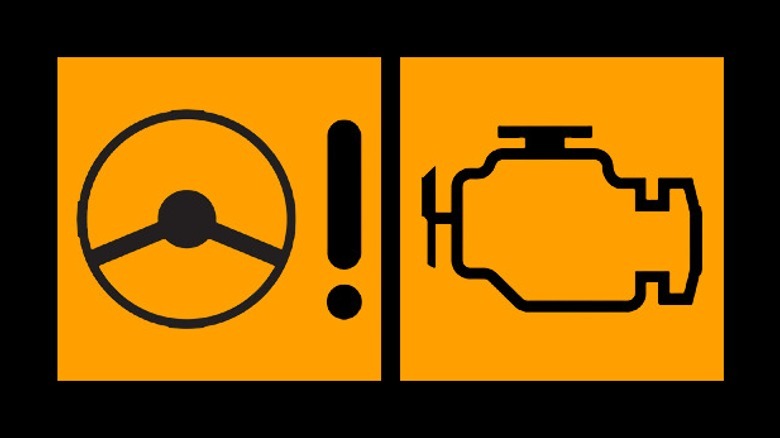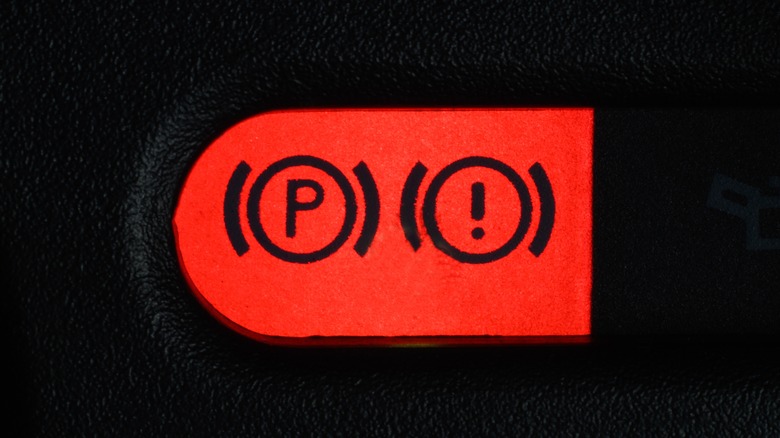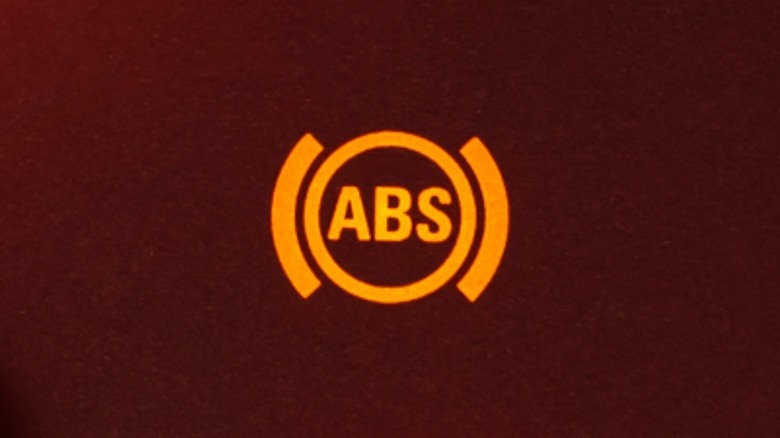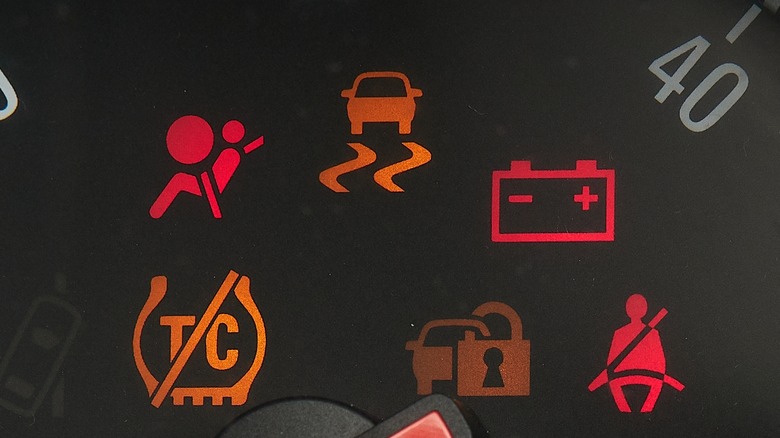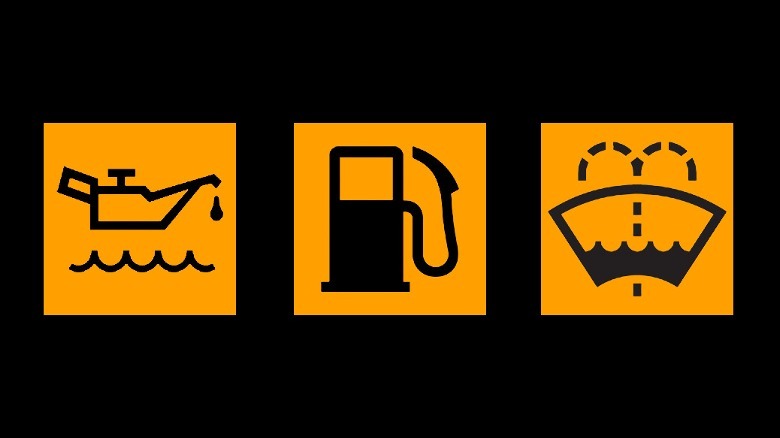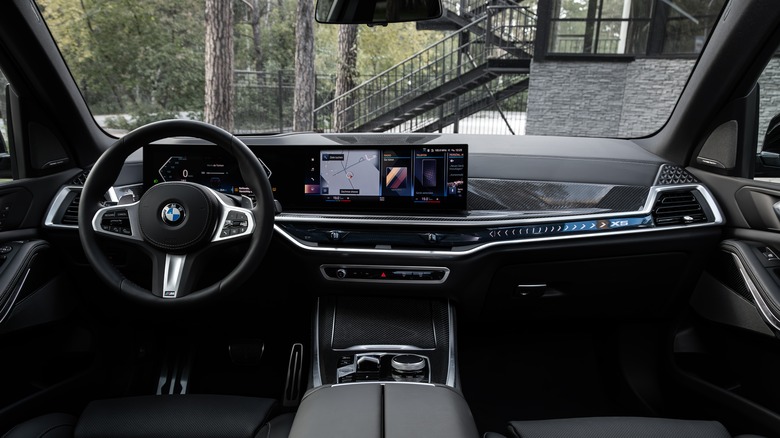Here's What The Warning Lights On Your BMW's Dashboard Mean
While BMW has generally been considered a reliable brand in its 100-year history, some stats sing a different tune. Certain models tend to have high repair costs and need attention more frequently than other vehicles. Thankfully, you can avoid the pitfalls of hefty repair fees by paying attention to the warning lights found on your BMW's dashboard.
In the early days of car ownership, drivers didn't get the benefit of advanced internal diagnostics, which meant people only knew there was a problem when their cars refused to start — or worse, breakdown. But these days, drivers seem to have a different set of problems, and many might feel overwhelmed by the dozens of potential warning lights that can illuminate at any given time.
While not all warning lights are a cause of serious concern, ignoring some of them can lead to disastrous consequences. So, if you're not warning light-savvy, here's how to tell when your BMW dashboard is normal and when you should be driving to the shop as fast as possible.
The color of your BMW dashboard warning lights signals the urgency of the problem
To understand your BMW's warning lights, there are two components that you need to look at: colors and symbols. Typically, symbols are not standardized across vehicles, so each manufacture will have their own take on icons that have similar meanings. However, they do tend to follow a color coding scheme that is indicative of urgency, regardless of the vehicle.
Anything colored blue or green is informative and is not really a massive cause of concern. Often, it's just something that reveals whether a certain feature is being utilized or not. In many cases, these are connected to the your turn signals and the different lights in your car, such as your headlamp, high beams, fog lamp, and so on.
On the other hand, an orange or yellow warning light can mean something is off and that you should either inspect the problem or have a professional evaluate it for you. While it doesn't mean you're in immediate danger, it is an early warning sign that you should keep in mind. And of course, anything red or blinking means you need to do something ASAP or risk problems with your vehicle and safety. Depending on your car model, the exact warning light symbols available on your dashboard can be found in your owner's manual. However, here are the common ones you will likely see on your BMW dashboard that you should definitely not miss.
What do the BMW warning light symbols stand for?
Once your start moving past the 5 mph speed mark and your seatbelt is not yet securely fastened, the red Safety Belt warning light will appear on your dashboard. To turn it off, just make sure everyone onboard wears their seatbelt and relocate heavy items towards the floor or the trunk of your car. There's also a warning light for when the seatbelt and airbag aren't properly calibrated: the Airbag & Seat Belt Tensioner System warning light. This is important to service if there is an issue because although you might not notice a change in your vehicle in your day to day driving, you want it functioning in case of an accident.
Other warning lights are simply signs that you should be careful because of external conditions. For example, if the Traction Control comes on, it's there to warn you that you may be at risk of losing control of your vehicle due to road conditions. Similarly, the Temperature warning light indicates that the outside temperature is 37 degrees Fahrenheit or colder, which can lead to frost.
Still more warning lights are fairly self-explanatory, like Door Ajar, which pops up when a door in your BMW is not closed, and the Engine Overheating light, which means you should give your engine a break until it cools back down. Of course, the Battery and Bulb warning lights reveal problems with your car's battery and exterior lights, respectively.
Several lights warn about issues related to steering and traction
Some warning lights can be related to your active driving experience, such as steering and engine health. The Steering System warning light, otherwise known as Integral Active Steering, indicates a problem related to the car's steering mechanism. Because different models utilize different steering systems, this could be due to a variety of reasons, like fluid levels or motor problems. However, it could also just be something small like having your wheels at a tilt, which could be resolved by turning your steering wheel in both directions.
Similarly, when the Check Engine warning light goes on, it's not always obvious what's causing issues with your engine. This warning light could be caused by anything from a faulty catalytic converter to wonky spark plugs or sensors. Regardless, if the Check Engine light keeps blinking nonstop, it's often due to something serious.
Additionally, there are informative warning lights that are there to help you drive better. For example, the Vehicle Detection warning light helps notify you when another car is approaching your BMW, and the Cruise Control warning light will turn on to show that it is enabled. In addition, if you're having trouble keeping the car straight and letting your car drift across lines, the Lane Departure warning light can help put you and your vehicle back on track.
[Embedded image by Soupeurfaive via Wikimedia Commons | Cropped and scaled | CC BY-SA 3.0]
A specific set of lights signals issues with the brake system
One really crucial aspect to your BMW's overall safety is the health of its brakes. That's why when either the Brake System or the Antilock Brake System (ABS) warning lights turn on, you should run to the nearest service center without delay, avoiding roads where you might have to brake hard on the way. Similarly, the Brake Fluid Level warning lights will turn from yellow to red when you need to add fluid.
Of course, healthy brakes won't be of use unless your tires are safely secured. Tire health can impact everything from road traction to fuel efficiency, and making sure you have the right tire pressure is critical to your overall safety on the road. Thankfully, BMW cars also have Tire Pressure Monitor warning lights that are color-coded to indicate if tires either need adjustment (yellow) or if they're posing a hazard and have been deflated (red).
Other warning lights alert you to road conditions
While some warning lights can nearly give you a heart attack, others are just there to signal that your high beams, front fog lamps, and turn signals are working. Similarly, other lights will come on when certain other features are engaged, like the parking brake, automatic hold, and the Dynamic Stability Control system (DSC). That being said, if features like DSC are always turning on by themselves, you may want to get it checked out.
Several warning lights are there to warn you when certain fluids need to be topped up, such as the oil, windshield wiper fluid, and coolant. In some cases, the generic "Warning" light will also appear when your gas goes below a quarter tank. Once you reach critical gas levels (or 30 miles of gas left), you'll see the Empty Light warning instead. Just make sure to screw the cap on properly after gassing up, or you'll be seeing the Check Gas Cap warning light, too.
Short of avoiding the most unreliable used BMW models, addressing critical warning lights as soon as possible is one of the next best things you can do to keep your car running smoothly. In fact, instead of just waiting until your BMW is (visually) screaming for attention with its warning lights, make sure you're doing regular maintenance on your vehicle as well.
[Embedded image by Soupeurfaive via Wikimedia Commons | Cropped and scaled | CC BY-SA 3.0]
Staying attentive to these signs can help your BMW run longer
Typically, BMW maintenance schedules will include standard check-ups for fluid replacements, battery testing, and brake inspection. Plus, it will also cover recommendations for maintaining tire health, such as rotation and alignment. To get an estimated maintenance schedule, you can't go wrong with consulting your car's manual. That said, because maintenance schedules will vary based on your particular car's model, its age, your driving style, and where you drive, you can also speak to the dealership you bought your car in or your trusted local mechanic. Afterward, you can begin to keep track of your maintenance schedule, whether it is with a notebook, a spreadsheet, or app.
Although it can seem like a hassle, regular maintenance can help you spot issues with your vehicle even before the warning lights come on. Not to mention, a maintained car is an efficient car and one of the many ways to use less gas when driving. Thankfully, we've also rounded up plenty of car maintenance tips here at SlashGear for every kind of vehicle, including the most important tools for DIY engine maintenance and the suggested maintenance schedule for cars with under 3,000 miles under their belt.
